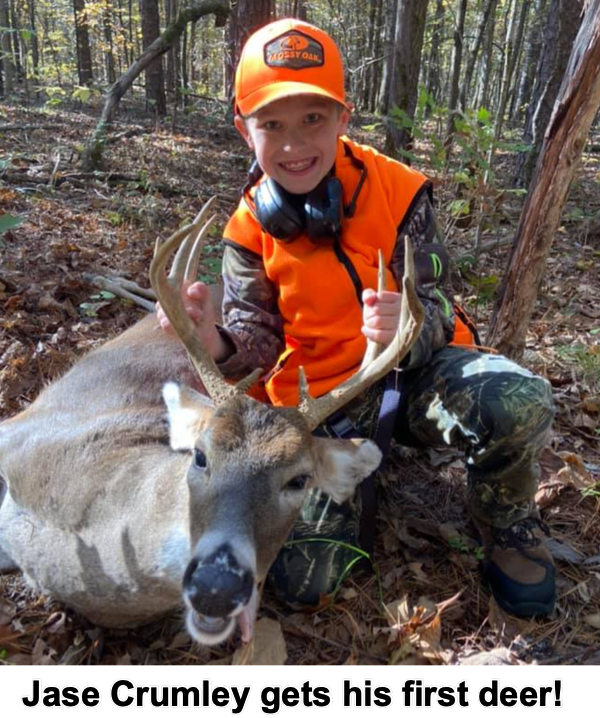
Young hunters harvest 15,608 deer during early youth portion
Top counties include Osage, Franklin, and Howell.
Preliminary data from the Missouri Department of Conservation (MDC) shows that young hunters ages 6 through 15 harvested 15,608 deer during Missouri’s early youth portion of the 2021 deer hunting season, Oct. 30-31. Top counties were Osage with youth hunters harvesting 359 deer, Franklin with 329, and Howell with 310. Youth hunters harvested 15,854 deer during last year’s early youth portion.
View additional harvest numbers for the 2021 early youth portion at Telecheck Harvest Numbers (mo.gov).
“Weather can have a big impact on harvest totals during our shorter season portions,” said MDC Cervid Program Supervisor Jason Isabelle. “Thankfully, the rain we experienced across much of the state late last week moved out just in time for our youth hunters to have some great conditions over the weekend.”
Missouri’s deer archery season continues through Nov. 12 and resumes Nov. 24 through Jan. 15, 2022. The November portion of firearms deer season runs Nov. 13-23 followed by the late youth portion Nov. 26-28. The antlerless portion of firearms deer season runs Dec. 4-12 followed by the alternative methods portion Dec. 25 through Jan. 4, 2022.
Read more information on deer hunting from MDC’s 2021 Fall Deer & Turkey Hunting Regulations and Information booklet, available where hunting permits are sold and online at https://short.mdc.mo.gov/Zyy
Jase Crumley is the son of Barry and Kim Crumley.
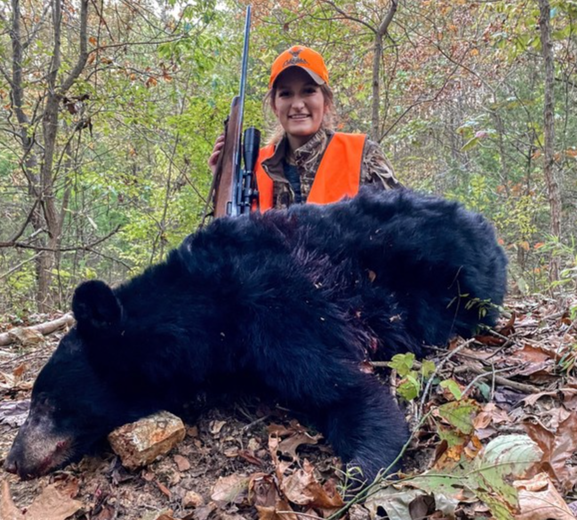
MDC reports Missouri hunters took 12 Black Bear during first season
Missouri’s first black-bear hunting season ran Oct. 18–27 with 12 bears taken out of a maximum harvest of 40.
The Missouri Department of Conservation (MDC) reports that Missouri hunters harvested 12 black bears during the state’s inaugural bear-hunting season, which ran Oct. 18–27. More than 6,330 hunters applied for 400 permits for the season with the maximum total harvest for the season being 40 bears.
“This was an incredibly successful first bear hunting season for Missouri given that we have a highly regulated season, that bears in the state are widely distributed throughout some pretty rugged wilderness, and that many hunters had never hunted bears before,” said MDC State Furbearer and Black Bear Biologist Laura Conlee. “A harvest of 12 bears in our first season is testament to the hunters. Bear hunting is an extremely challenging endeavor, especially under the framework that we established. This was a new experience for many hunters, and they put in the work to be successful and take advantage of this new hunting opportunity.”
Conlee added that MDC took a conservative approach in developing its bear-hunting regulations.
“Our highly regulated and limited season included a sustainable maximum harvest of 40 bears, which is about 5% of our total bear population,” Conlee said. “We also prohibited baiting and the use of dogs, limited hunting to 10 days, and restricted the number of hunters who could participate. With any new season, it is difficult to predict hunter success, so we took a conservative approach to limiting the number of hunters and length of the hunting season. This was to ensure we didn’t overharvest the bear population in any one zone.”
Bear hunting in Missouri is limited to Missouri residents and restricted to three designated areas of southern Missouri called Bear Management Zones (BMZ). Each permit issued is for a specific BMZ and hunting is limited to public or private property within the BMZ. Permit and harvest quotas for the 2021 bear season were:
BMZ 1: Permit quota of 200 with a harvest quota of 20 bears.
BMZ 2: Permit quota of 150 with a harvest quota of 15 bears.
BMZ 3: Permit quota of 50 with a harvest quota of 5 bears.
The more than 6,330 hunters who applied during May to hunt a specific BMZ paid a $10 application fee. The 400 hunters selected for permits through a random drawing of all applicants then paid a permit fee of $25.
Among those selected for permits, Kelsie Wikoff of Hume harvested a 268-pound boar (male bear) in Zone 1. She said she had spent 48 hours in a tree stand over three days since the season began Oct. 18 and harvested the bear Oct. 21.
Including Wikoff’s harvest, black bears harvested during the first season were from the following BMZs:
BMZ 1: Nine (9) bears harvested.
BMZ 2: Three (3) bears harvested.
BMZ 3: Zero (0) bears harvested.
According to the Wildlife Code of Missouri, the harvest limit is one bear per permit. Only lone black bears may be taken. Hunters may not take bears that are known to be in the presence of others bears, including female black bears with cubs. Bears may not be disturbed, pushed, harassed, or taken from a den. Bear hunters must wear hunter orange, make reasonable efforts to retrieve shot bears, and may not leave or abandon commonly edible portions. Learn more about bear hunting in Missouri at mdc.mo.gov/bearhunting.
Black bears were historically abundant throughout the forested areas of Missouri prior to European settlement but were nearly eliminated by unregulated killing in the late 1800s, as well as from habitat loss when Ozark forests were logged. Over the last 50 years, bear numbers and range in Missouri have grown to around 800 black bears with most found south of the Missouri River and primarily south of Interstate 44. Missouri bear range is expanding. Bear numbers in Missouri are increasing each year by approximately 9% and are expected to double in less than 10 years. As bear numbers continue to increase, MDC will use a highly regulated hunting season as an essential part of population management. MDC’s 2020-2030 Black Bear Management Plan will guide bear management in Missouri for the next decade. Learn more about black bears in Missouri and MDC management efforts at mdc.mo.gov/bears.
TOP PHOTO CAPTION AND CREDIT: Congratulations to Kelsie Wikoff of Hume on her harvest of this 268-pound boar (male bear) in Zone 1 during Missouri’s first bear-hunting season. Photo credit: Kelsie Wikoff
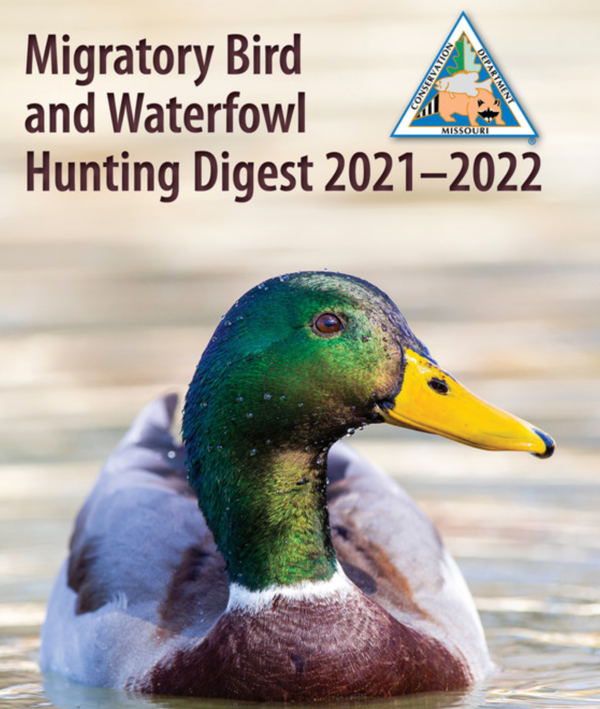
Pre-season reservation period will run Sept. 1-18. In-season weekly drawings will take place Monday afternoons.
The Missouri Department of Conservation (MDC) announces its managed waterfowl hunts for this hunting season. The pre-season reservation period will run Sept. 1-18 with results posted Oct. 1. The in-season weekly drawings will take place on Monday afternoons with a seven-day application period that opens the Tuesday before and closes the Monday of the draw at 3 p.m.
Missouri residents and qualifying non-residents, such as students from out of state or members of the military stationed in Missouri, can apply online for a reservation to guarantee them an opportunity to hunt on a specific day on a specific area. Residents and nonresidents can also arrive at a managed waterfowl hunting area the morning they wish to hunt and wait in line for the possibility of getting a hunting spot.
Applicants for waterfowl reservations must have their required permits to apply, and their Federal Duck Stamp to hunt.
MDC offers managed waterfowl hunting on more than a dozen conservation areas specially managed with a focus on wetlands. Hunters can apply for a reservation or participate in a daily morning drawing for opportunities to hunt at these areas. MDC also offers waterfowl hunting on other conservation areas. In addition to MDC areas, Missouri offers waterfowl hunting opportunities at numerous other public and private locations around the state.
For this fall, MDC’s waterfowl reservation system will offer 50 percent of daily hunting positions for the managed-hunt areas through online reservations. Of the 50 percent of spots through online reservations, half will be for pre-season applications and half will be allocated during a weekly in-season application period. The remaining 50 percent of spots will be held for hunters who participate in the daily morning drawing and wait in the “poor line” for the possibility of getting a hunting spot.
“Under this reservation system, if an area offers 20 daily hunting positions, five will be allocated through pre-season reservations and five through in-season reservations,” explained Joel Porath, who coordinates managed waterfowl hunts for MDC. “The remaining 10 positions will be allocated to hunters from the poor line the morning of each hunt.”
Successful pre-season and in-season reservation applicants will be notified after their respective draws via email or text message with their hunt date, location, and pill assignment. “Pills” designate the order hunting parties select their hunting locations on the area. The lower the number, the sooner hunting parties get to select their hunting location.
“This will let reservation holders know before they leave their homes if their randomly generated number will enable them to be one of the first, middle, or last parties to pick their hunting location,” said Porath.
Only one member from each hunting party will be allowed to have a staff member pull a pill for their respective party. Residents and nonresidents can hunt with a reservation holder and hunting parties are limited to a maximum of four people.
MDC also notes that hunters with disabilities will apply to use ADA hunting blinds through the online reservation system during the same timeframe as the preseason application period. ADA blinds that are not selected and allocated during the preseason drawing will be placed in the weekly in-season draws.
“As with last season, MDC is prepared to use COVID-19 modifications implemented in the 2020-2021 waterfowl managed hunt process to assure the safety of hunters and staff if COVID conditions this season warrant these steps,” Porath added. “These steps include staff working to implement plans to allocate hunting locations this season for vacant positions so hunting spots don’t go unused.”
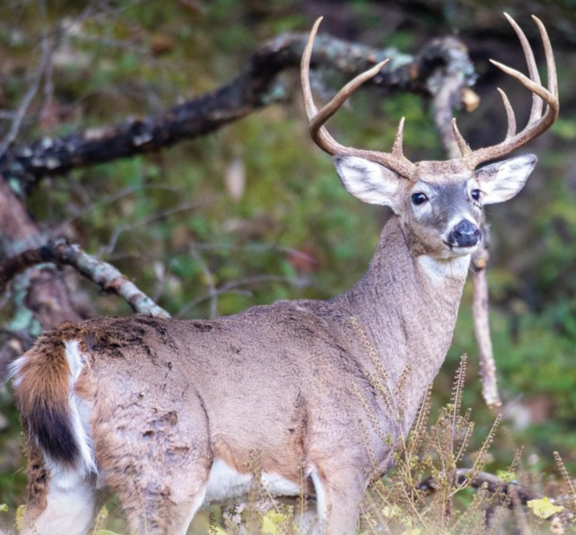
Get more information on MDC managed deer hunts, preview hunt details, and apply starting July 1 at mdc.mo.gov/managedhunt.
Beginning July 1, deer hunters can apply online through the Missouri Department of Conservation’s (MDC) website for a shot at more than 100 managed deer hunts throughout the state this fall and winter.
MDC offers managed deer hunts for archery, muzzleloading, crossbow, and modern firearms from mid-September through mid-January at conservation areas, state and other parks, national wildlife refuges, and other public areas. Some managed deer hunts are held specifically for youth or for people with disabilities.
The managed deer hunt application period is July 1 - 31. Hunters are selected by a weighted random drawing. Draw results will be available Aug. 15 through Jan. 15. Applicants who are drawn will receive area maps and other hunt information by email, or mail if an email address is not located on the customer’s account.
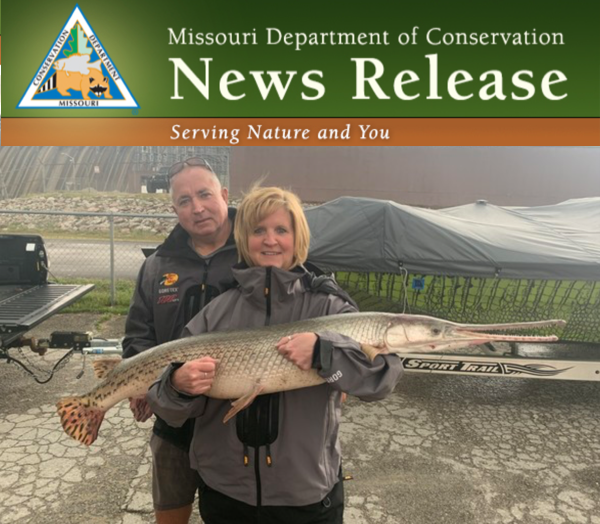
Anthony Schnur, Jr. caught a 32-pound, 10-ounce fish from Table Rock Lake April 7.
The Missouri Department of Conservation (MDC) confirms Anthony Schnur, Jr. of Pevely is the latest state-record holder after catching a 32-pound, 10-ounce longnose gar from Table Rock Lake. Schnur was fishing April 7 when he reeled in the fish using the pole-and-line method. His current record breaks the previous record of 27-pounds set in 1999.
Schnur said this catch is significant for him after the sudden passing of a dear friend.
“I had a good buddy of 30 years who passed away,” said Schnur. “The funny thing is his wife called me that morning with the news. And she asked me to do her a favor and catch a fish in his name. My girlfriend and I went out to his favorite spot originally for crappie fishing when she happened to spot the gar. And sure enough, we caught it and it turned out to be a record. It’s absolutely unreal.”
Longnose gar is the most widely-distributed gar in Missouri, likely occurring in every major stream in the state. It is the most abundant gar found in clear, high-gradient Ozark streams and is prominent in the large Ozark reservoirs.
MDC staff verified Schnur’s fish on a certified scale at Shepherd of the Hills Fish Hatchery in Branson. This makes the fourth state record fish caught in 2021.
“I really hope to mount this fish in my friend’s memory,” Schnur said. “I think it would be a beautiful way to honor him.”
Missouri state record fish are recognized in two categories: pole-and-line and alternative methods. Alternative methods include: throwlines, limb lines, bank lines, jug lines, spearfishing, snagging, snaring, gigging, grabbing, archery, and atlatl.

